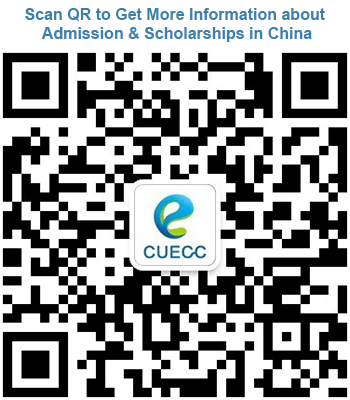more>>See More
The University in Zhejiang Province
By shirly on 2018-07-25
Brief introduction
Zhejiang Province is situated along the shore of the East Sea. It has a total area of over 100,000 square kilometers (38,600 square miles) and a population of 46 million. Zhejiang is home to many minority ethnic groups including Han, Hui, Manchu and Miao. Zhejiang is the province with the most islands in China, with more than 200 islands along its coast. Hangzhou is its capital. Its nominal GDP for 2010 was 2.72 trillion yuan (US$402 billion) with a per capita of 44,335 yuan (US$6,490).
Location and Climate
Zhejiang consists mostly of hills, which account for about 70% of its total area. Altitudes tend to be highest to the south and west. Valleys and plains are found along the coastline and rivers. Lying in China, as southeast coastal region, the province boasts of numerous gulfs and bays and more than 2,100 islands, accounting for one-third of the total islands in China.
Zhejiang has a humid subtropical climate with four distinct seasons. Every year, there is a rainy period, which occurs from early June to early July. Sometimes from late August to late September typhoons will attack this region. The annual rainfall is from 1200 to 2000 millimeters. Spring and autumn are the most pleasant months for travelers to visit Zhejiang.
History
The history of Zhejiang goes back to ancient time. Neolithic Hemudu Cultural Ruins dating back as early 7000 years ago are regarded as one of the cradles of Chinese civilization. As early as the Spring and the Autumn Period (770 BC - 476 BC), Zhejiang was separately dominated by the Wu Kingdom and Yue Kingdom. From that time on, the Wu and Yue culture developed and flourished. Hangzhou was the capital of South Song Dynasty.
Transportation
Getting in and out of the city is convenient because of the well-planned transportation system. If you want to come by water, there are a series of international and domestic sea routes. If you plan to arrive by air, Hangzhou International Airport offers excellent service. Of course, arriving in Zhejiang by land is another option, while trains or long-distance buses are yet another alternative.
Culture
Zhejiang is the home of Yueju, one of the most prominent forms of Chinese opera. Yueju originated in Shengzhou and is traditionally performed by actresses only, in both male and female roles. Longjing tea (also called dragon well tea), originating in Hangzhou, is one of the most prestigious. Zhejiang cuisine is one of the eight great traditions of Chinese cuisine.
Food and drink
West Lake Lotus Root Starch: The lotus root starch is the famous brand of the same kind. It is the nourishment most suitable for babies, the old and patients for many uses including promoting salivation, reducing fever, moistening the lung, replenishing vital essence, etc.
Longjing Tea: The mountains surrounding the West Lake are the home of Longjing Tea. Longjing Tea is constantly commended because of jade colour, rich fragrance, mellow taste and beautiful features. It also contains rich chemical elements such as amino acid, chlorophyll, vitamin C, etc.
Tourism
Zhejiang is known as a "famous tourist center and a land with rich historical relics," featuring mountains, the sea, rivers and lakes, and caves, a landscape typical in regions south of the Changjiang River. There are 11 national scenic areas and 22 provincial scenic areas. Of which the better-known are the picturesque West Lake in Hangzhou; Shaoxing, a city of waters and bridges; Putuo Mountain, a center of Buddhism; the charming Fuchun River; Qiandao Lake, a landscape of mountains reflected in water; Mogan Mountain with a cool, comfortable climate; and the magnificent Yandang Mountain. There are 28 national units of historical relics under key protection, including the unsophisticated Pagoda of Six Harmonies, the Temple of Yue Fei, Lanting Pavilion to the memory of Wang Xizhi, a master calligrapher of the Jin Dynasty (265-420), the Guoqing Temple, a famous place of Buddhism, and Tianyi Pavilion in Ningbo, one of the four major libraries in ancient China.
Universities in Zhejiang
? Zhejiang University
? Zhejiang University of Technology
? Zhejiang University of Science & Technology
? Zhejiang Sci-Tech University
? Zhejiang Normal University
? ZheJiang Yuexiu University of Foreign Languages
? Wenzhou University
? Yiwu Industrial & Commercial College
? Hangzhou Normal University
? Hangzhou Dianzi University
? Zhejiang University of Finance & Economics
? Zhejiang Gongshang Univeristy
? Zhejiang Shuren University
? Zhejiang Technology Institute of Economy
? Zhejiang Water Conservancy and Hydropower College
? Zhejiang Forestry University
? Zhejiang Vocational Academy of Art
? Zhejiang Chinese Medical University
? Zhejiang Radio & TV Unviersity
? China Academy of Art
? Zhejiang Wanli University
? Zhejiang Textile & Fashion College
? Ningbo University of Technology
? Zhejiang Business Technololgy Institute
? Ningbo Polytechnic
? Wenzhou Medical College
? Wenzhou Vocational & Technical College
? Ningbo University
If interests, please contact us.
Shirly
Tel: 0086-571-88165968
Mobile/Wechat: 15857187587
Email: recruit@cuecc.com
Skype: teachcn
QQ: 2853662504

- Contact Us
-
Tel:
0086-571-88165708
0086-571-88165512E-mail:
admission@cuecc.com
- About Us
- Who We Are What we do Why CUECC How to Apply
- Address
- Study in China TESOL in China
Hangzhou Jiaoyu Science and Technology Co.LTD.
Copyright 2003-2024, All rights reserved




 Chinese
Chinese
 English
English
 Korean
Korean
 Japanese
Japanese
 French
French
 Russian
Russian
 Vietnamese
Vietnamese
